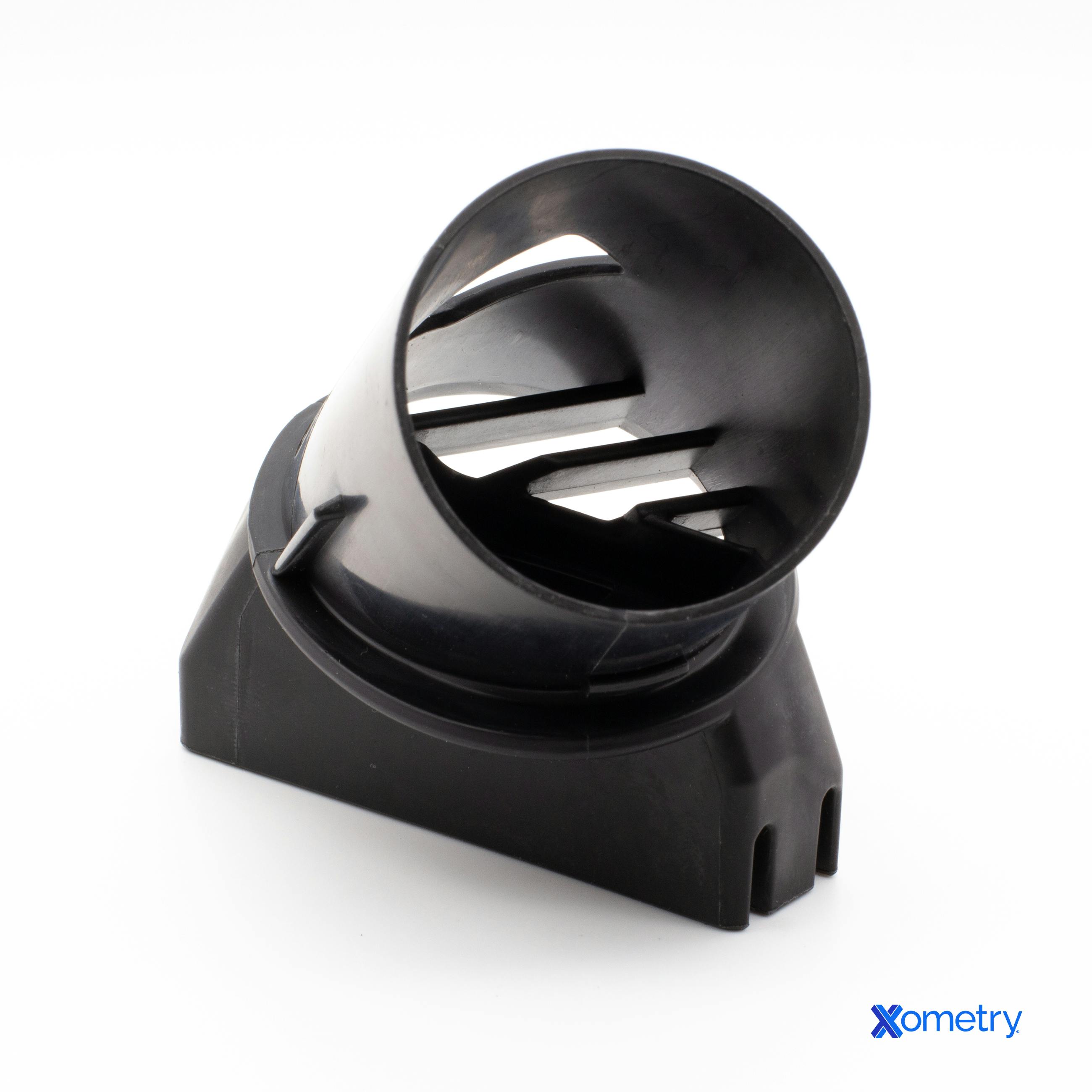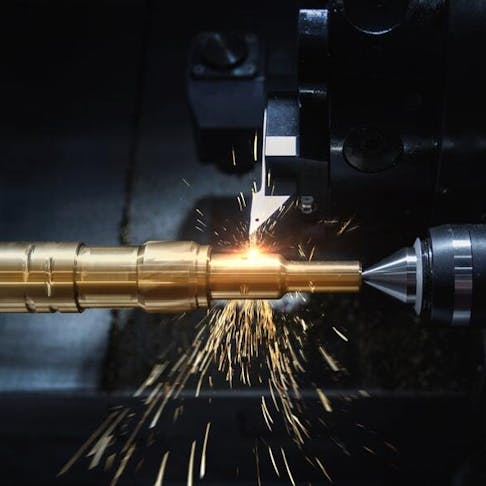advanced plastic processing for precision injection molding - advance plastic mo
Author:gly Date: 2024-10-15
Cost comparison: Tooling costs for CNC machining are significantly less than for injection molding. CNC machining costs are associated with the fabrication of fixtures and jigs and the procurement of raw materials and tools. Molds for injection molding can cost a few thousand dollars for single-cavity and low-cavitation molds and up to hundreds of thousand dollars for multiple-cavity molds. An injection mold will pay for itself when its cost is spread over a sufficiently high production volume. Assuming you have the necessary machinery to make parts and only need to make arrangements for tooling like molds, fixtures, and jigs, upfront costs on CNC machining are lower.Â
Speed comparison: Both CNC machining and injection molding are notable for their ability to rapidly produce parts. For small-volume runs, CNC machining is often preferred. Injection molding is preferred for larger runs because multiple-cavity molds can rapidly produce parts and reduce per-piece cost. Taking into account the lead time for mold production, it takes longer to start series production using injection molding than using CNC machining. Consider using CNC machining for small production runs and injection molding for large runs.
Plastic injection molding is a manufacturing method that uses an injection molding machine (IMM). These machines contain components such as injection screws, injection barrels, and fabricated molds. Plastic pellets are fed into the barrel and are melted through the rotation of the screw and heater bands. The molten plastic is injected into the mold and formed into the geometry of the part. The IMM holds pressure on the mold until products have been properly formed and cooled. The completed parts are ejected and the cycle restarts.
CNC machining is a subtractive manufacturing process that uses machines like mills, lathes, drill presses, and saws, to make highly precise parts. Computer-Aided Design (CAD) data is developed during the product design phase. This CAD data is then used as the basis for programming and optimizing the machine tool sequences and paths. The material is then processed using cutters, such as end mills and drill bits to create the parts. Auxiliary machinery, including honing, hobbing, or grinding machines, may also be needed to complete parts to customer specifications.
The content appearing on this webpage is for informational purposes only. Xometry makes no representation or warranty of any kind, be it expressed or implied, as to the accuracy, completeness, or validity of the information. Any performance parameters, geometric tolerances, specific design features, quality and types of materials, or processes should not be inferred to represent what will be delivered by third-party suppliers or manufacturers through Xometryâs network. Buyers seeking quotes for parts are responsible for defining the specific requirements for those parts. Please refer to our terms and conditions for more information.
Even though the strength ABS is too low for hard wearing engineering applications, it is still high for domestic plastics, especially in regards to dimensional rigidity, resilience and wear resistance
ABS is suited for many user products where a relatively low cost, good surface finish, colouration and low temperatures are involved. Applications may include plastic computer input devices such as keyboards, plastic toys and building blocks, electric tool enclosure, carrier bags and medical equipment. Another interesting one is bulletproof windows, where the transparency and impact strength comes to its full right.
Injection molding is a process where a molten material is injected at a high pressure into a mold, to form a certain shape or form. Different molten materials yield different properties of the final product, and also have different processes.
These differences lead to significantly different costs for the two processes. In this article, we discuss everything there is to know about CNC machining vs. plastic injection molding, including the advantages and disadvantages of each, and process alternatives to both.
Xometry provides a wide range of manufacturing capabilities, including CNC machining, 3D printing, and other services for all of your prototyping and production needs. Get started on your plastic injection molding quote or CNC machining quote with us today.
ABS, or Acrylonitrile Butadiene Styrene, is one of the materials that may be used in this process. ABS is a thermoplastic polymer, with properties that lend itself very well to the injection molding process. Many consumer products that we see and use today have been manufactured using ABS injection molding .
Brothers Isaiah and John Hyatt developed injection molding in 1872 and used it to mold hair combs, buttons, and other small items. In the 150 years since that first machine, injection molding has blossomed into a multi-billion dollar global industry. Injection molding is considered a more cost-effective and efficient way to make plastic parts than CNC machining.


ABS is a plastic with a fairly low melting point in the world of injection molding. ABS melts at just above 100⁰C, and is typically injected at a temperature of just above 200⁰C. While this lower melting temperature makes the injection process cheaper and easier, it also limits the use of ABS in high temperature applications. ABS is a thermoplastic, which means that it can be melted again and reused in the process.
The natural transparency of ABS enables it to be used in see-through applications, but also makes it easy to add any colour to the final product
Table 1 shows a comparison of different attributes and properties of CNC machining compared to plastic injection molding.
Materials comparison: A broader range of materials can be used in CNC machining processes than in injection molding. CNC machining is capable of producing parts from certain plastics, but also from metals, like aluminum and steel. Many thermoplastics, thermosets, and elastomers are too soft to be CNC machined. However, they can easily be fabricated into parts using injection molding machines.
Energy required for melting down the plastic is low, and a lower mold temperature is needed which results in higher production speed
Volume comparison: Injection molding can both produce more parts per base machine and more parts per dollar invested compared to CNC machining. Molds used in injection molding can have multiple cavities - from one cavity to several hundred. Hence, injection molding can quickly produce large numbers of parts. In CNC machining, parts are generally made one by one. While CNC machining is fast at producing parts, injection molding is even faster.
While manual machining of parts has existed since 1300 BC, CNC machining wasnât developed until the mid-1940s. The first control mechanisms that eventually were used on CNC machines were used to punch code tapes as a way of communication. In 1949, the first experimental 3-axis milling machine was created to make helicopter blades and stiffer skin for various aircraft. In the 1970s, CAD and CAM software began to be integrated into CNC systems. Now, CNC machining is one of the most widely used manufacturing methods in the world. It is used to make products for several industries, from automotive to agriculture. CNC machining is often preferred to injection molding due to the ability to easily accommodate product design changes, its ability to produce tight tolerance parts, and the possibility of using several different materials.
The properties of ABS show a good marriage between in its constituents – butadiene provides ductility and resilience, nitrile bonds provide strength and the styrene components give an aesthetic finish.
ABS has mechanical properties that makes the post processing thereof cheap and easy. It is highly machinable, and responds well to typical plastic processes such as glue fixing and polishing. The strength of ABS is not high enough to make it a prominent figure in engineering plastics, but it is sufficient to use in domestic end user products. It does however have a good impact strength and material resilience which it owes to its chemical composition.
Picking an appropriate manufacturing method for a new product is often easier said than done. CNC machining and plastic injection molding are both commonly used and cost-effective ways to produce parts. While both methods are similar in those regards, they are completely different fabrication methods. CNC machining is a subtractive manufacturing process that uses metal cutters to remove material from a workpiece to create the final part shape. Plastic injection molding forces liquid plastic to conform to the shape of a mold to make the finished part. Three major differences exist between the two methods. These are materials that can be used, the volume of production that can be attained, and part dimensional tolerances and precision.Â
Perhaps the biggest similarity between CNC machining and plastic injection molding is that both can utilize many of the same materials, including polycarbonate (PC), High-density polyethylene plastics (HDPE), and ABS (acrylonitrile butadiene styrene). Aside from that, there are not many similarities between the two processes.









